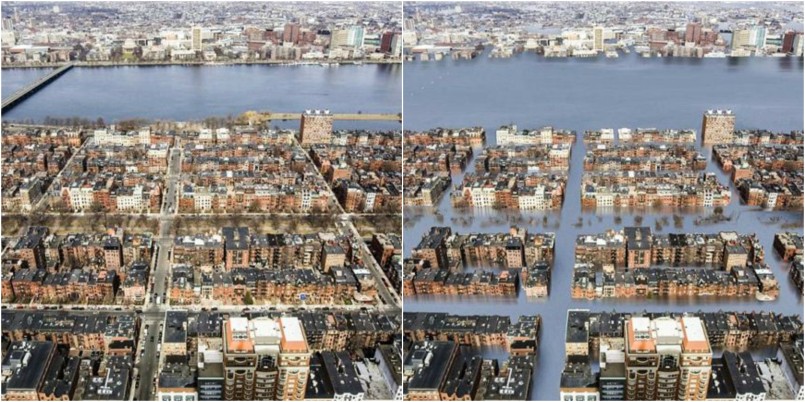Environment
Sea level rise and our coastal cities: What to expect

AT&T Park, San Francisco now and in 2200
Since 1880, global warming has resulted in a worldwide sea level rise of approximately eight inches. While that probably doesn’t sound like much, an analysis conducted by Climate Central explains that the rate of sea level rise is actually accelerating. Sea levels increasing around global coastlines are expected to add between 20 and 80 inches this century, with at least 1-8 inches predicted within the next fourteen years, depending upon how much heat-trapping pollution we add to the atmosphere and what part of the coastline is being measured. This increase in sea level subsequently increases the likelihood of worsening floods and their inherent damage from storm surges, which are also predicted to worsen by double or higher by the year 2030.

Venice Beach, California now and in 2200
For coastal areas, the acceleration of sea level rising could be particularly devastating. For example, Hurricane Sandy killed 233 people in 2012 throughout the United States, the Caribbean and Canada, and caused nearly $1 trillion in direct damage in primarily coastal regions. Storms and floods like those produced by Sandy were previously considered to be “once-in-a-lifetime” events—but no longer. Scientists predict with sea level rise we can look forward to Sandy-level storms much more frequently, with some specifying that “powerfully destructive storms on the order of Sandy will occur up to four times more often by the time a baby born today is 85.”

Back Bay, Boston now and in 2200
According to Christopher S. Watson of the University of Tasmania in Australia, without a major reduction in greenhouse gas emissions in nearing decades, we are “on track to hit the IPCC’s (Intergovernmental Panel on Climate Change) “worst-case scenario” of a three-foot global sea-level rise by 2100.” The IPCC is the scientific group formed by the United Nations to assess the impacts and advancing of climate changes.

Statue of Liberty, New York City now and in 2200
Another study published in the journal Science also shares forecasts of similar sea level rising. However, their study suggests that whether we keep temperatures from rising higher than the widely agreed-upon two degrees Celsius benchmark for catastrophe or not, we will still probably see oceans spreading into coastal cities by four feet as early as the year 2100. The Science study examined 30 years of ice-cap oxygen levels against today’s amounts. They found that 120,000 years ago, the earth’s temperature globally was between one and two degrees hotter globally than it is currently and sea levels were approximately twenty feet higher. With that figure in mind, they’ve assessed the future to look roughly as it did then when we reach similar levels.

Washington Monument, Washington D.C. now and in 2200
Overall, it appears that plans to decrease heat-trapping pollution spewing into the atmosphere are most definitely in order, as are planning for the eventual coastal changes. Watson shares his view that “I think that our agencies, regionally, need to consider the impact of rising sea level and plan accordingly. The community has the right to consistent information on these things. I think there are parts of the world where that information has been inconsistent.” And he adds further that, “Adaption is going to happen. Sea level is rising, full stop. We need to be able to adapt, and the community needs better information to be able to do so.”





0 comments